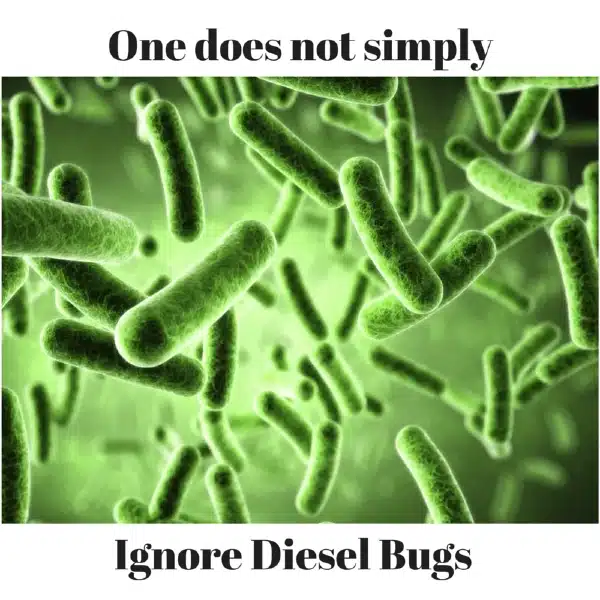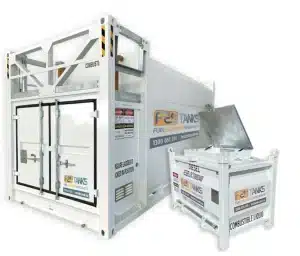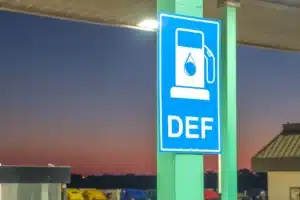What is a Diesel Bug?
A diesel bug is a common term for a myriad of microscopic organisms that grow in the fuel-water interface present in any static bodies of diesel – particularly fuel tanks. From yeasts, to fungi and algae, these bugs share a few typical features.
- They require water and warmth for growth.
- A fast reproductive cycle allows them to multiply in numbers very quickly.
- As the older ‘bugs’ die their bodies and waste products accumulate in the tank.
- This results in the formation of a layer of sludge and slime.
Whilst you may or may not have heard of the term “diesel bug” or “diesel bug contamination”, you may have heard of “fuel contamination” which can be very closely linked to the presence of water and diesel bugs.
Did you know your tank breathes?
When we talk about air and water in tanks, they often exist together – and one of the reasons is because your tank breathes.
Each day, either through temperature fluctuation or the movement of fuel, the air pocket within a tank expands and contracts. This is why storage tanks are fitted with a breather – a valve that allows the tank to relieve this excess pressure and vacuum.
As air is introduced via the breather, it brings moisture in from the atmosphere with it, and cooler conditions within the tank can allow this moisture to condense. As these little droplets of water collect, they eventually fall into the fuel itself, and create a water-fuel interface – the perfect home for diesel bugs.
A full tank has limited airspace for the transfer of moisture via condensation.
Each of these droplets is like a swimming pool of space for more microbes and spores to colonize. With a constant supply of energy from the diesel, and dissolved oxygen from the water, this creates a perfect environment for these bugs to quickly take over.
Over time, if these water and bug issues are not handled correctly, there is a real risk of structural and mechanical damage to contaminated tanks, vessels, vehicles and machinery.
Slime, Grit & Machine Failure – Is Your Fuel Contaminated?
Sometimes the first symptoms of diesel bugs and contaminated fuel are not noticed, but the consequences cost us countless dollars each year in maintenance and damages.
If you notice any of these tell-tale signs, make sure to inspect your tank, and if you are unsure how, always check with your supplier –
- Clogged filters & the presence of slime or grit on tank floors.
- Pitted or corroded components in machinery and fuel systems.
- Darker fuel, or the presence of a foul smell.
- Rough running machinery from a particular fuel source or tank.
Any of these symptoms are indicators that fuel contamination may be affecting your diesel systems, and the key is vigilance, inspection and treatment before the problem multiplies.
Catching the Bugs – Inspection Protocol & Treatment
Ideally, inspection protocols and the correct treatment programs will allow us to identify, control, and protect our fuel reserves from diesel bugs. So what steps do we recommend?
The correct inspection protocols can catch fuel contamination before damages occur.
Prevention
For prevention, we recommend diesel biocide products. While these agents are great at controlling the numbers of living bugs – they do not remove existing sludge and slime, as this is primarily composed of dead bugs and their waste products.
These biocide products are not a permanent solution. Similar to hospitals and antibiotics – diesel bugs within your tank may develop resistance to these products, so we advise to use them appropriately as a preventive agent and to ask us for advice if you feel they are being overused.
Inspection & Fuel Testing
Inspecting your tanks regularly is a vital part to maintaining any fuel storage system, and many tanks have inspection hatches for this purposes.
Inspection routines should include monitoring your tank temperature, checking for leaks or checking for water in fuel reserves. Also, water condensation can be minimized by trying to keep the tanks full, and appropriate monitoring of tank levels is of utmost importance.
An extra level of safety can be gained by applying fuel testing methods to your maintenance schedule. This is particularly valuable as by testing the fuel itself, you can detect contamination that may not be visible to the naked eye or via inspection hatches.
Draining, Cleaning & Fuel Polishing
A tried and true method, draining and cleaning your fuel tank is essential to routine maintenance and should be performed at regular intervals as advised by your suppliers and local guidelines.
Any fuel removed during these processes can also be filtered and conditioned, which is commonly known as fuel polishing.
Fuel polishing is a series of filtration techniques designed to eliminate contamination, and in some scenarios can even save some of your fuel from being discarded.
Draining and cleaning is an ideal time to make sure that all water and existing debris is removed from your fuels.
Should you have any concerns or issues and require a second opinion, please get in touch for a chat.




